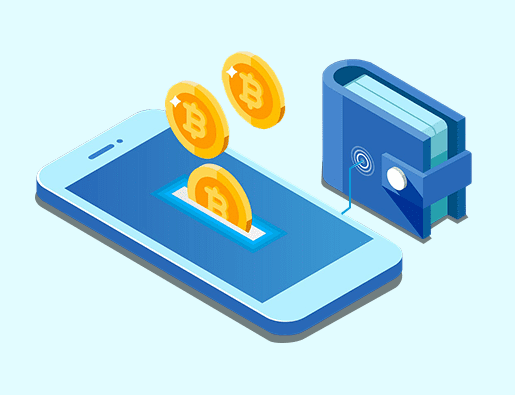As the world shifts toward a decentralized digital economy, Web3 wallets are at the forefront of this transformation. These wallets are more than just tools for holding cryptocurrency—they’re becoming gateways to decentralized applications (dApps), digital identities, and the broader Web3 ecosystem. But what does the future hold for Web3 wallets? Let’s explore.
The Digital Wallet Evolution
Traditional wallets have long been our companions for storing cash and cards, but with the advent of digital finance, physical wallets began to fade into the background. Today, we see the rise of digital wallets like PayPal, Google Pay, and Apple Pay, which simplify financial transactions.
However, Web3 wallets take this evolution a step further. These wallets don’t just store money; they provide users with complete control over their assets and access to decentralized platforms without relying on intermediaries. This control is central to the ethos of Web3—empowering individuals in a decentralized digital world.
What is a Web3 Wallet?
A Web3 wallet is your passport to the decentralized internet. It allows users to manage cryptocurrencies, interact with decentralized applications, and store digital assets like NFTs. Unlike Web2 wallets, which are centralized and depend on third-party providers, Web3 wallets give users full ownership of their private keys.
This means you are the sole custodian of your funds, making these wallets a powerful tool for financial independence and privacy.
Key Features of Modern Web3 Wallets
1. Decentralization at its Core
The essence of Web3 wallets lies in decentralization. By giving users control over their private keys, these wallets eliminate the need for intermediaries.
2. Enhanced Security
Web3 wallets come equipped with cutting-edge encryption to safeguard assets. Hardware wallets, in particular, are known for their robust security as they keep private keys offline.
3. Interoperability
Web3 wallets support multiple blockchains, enabling users to manage various cryptocurrencies and tokens in one place. This cross-chain compatibility is critical for a seamless user experience.
4. User-Friendly Interfaces
As developers work toward mainstream adoption, modern Web3 wallets are becoming more intuitive. Features like easy setup, simplified transaction processes, and clear navigation make them accessible to even non-technical users.
Challenges Facing Current Web3 Wallets
While Web3 wallets offer incredible potential, they’re not without challenges:
1. Usability Issues
For newcomers, managing a Web3 wallet can feel daunting. Terms like “seed phrases” and “gas fees” often confuse users unfamiliar with blockchain technology.
2. Security Concerns
Losing access to your private keys can mean losing your funds forever. Phishing attacks and scams are also common threats in the Web3 space.
3. Limited Accessibility
Many Web3 wallets require access to advanced technology and stable internet connections, making them less accessible to users in developing regions.
4. Scalability Problems
As Web3 adoption grows, the scalability of these wallets and their underlying blockchains will need to improve to handle increased traffic.
Technological Trends Shaping Web3 Wallets
The future of Web3 wallets is being shaped by exciting technological advancements:
1. AI Integration
Artificial intelligence is being integrated into Web3 wallets to enhance user experience. AI-powered wallets can offer personalized insights, detect fraudulent activities, and automate routine tasks.
2. Biometric Authentication
To make wallets more secure and convenient, biometric features like facial recognition and fingerprint scans are being implemented.
3. Social Recovery Mechanisms
Losing private keys is a common concern, but social recovery mechanisms are emerging as a solution. By designating trusted contacts, users can regain access to their wallets without compromising security.
4. Cross-Chain Compatibility
Interoperability between blockchains is crucial for Web3’s growth. Wallets are becoming more capable of supporting multiple networks, allowing users to interact with various ecosystems seamlessly.
The Role of Web3 Wallets in the Metaverse and DeFi
1. Enabling the Metaverse
Web3 wallets will play a vital role in the metaverse, serving as digital identities. They’ll enable users to own, trade, and manage virtual assets like land, avatars, and other in-game items.
2. Fueling DeFi
Decentralized finance (DeFi) relies heavily on Web3 wallets. These wallets allow users to lend, borrow, and trade cryptocurrencies directly, bypassing traditional financial systems.
3. NFT Management
Web3 wallets are not just for cryptocurrencies—they’re essential for managing non-fungible tokens (NFTs). From collectibles to digital art, wallets enable seamless transactions and storage of these unique assets.
Web3 Wallets and Mass Adoption
Mass adoption of Web3 wallets will require significant improvements in user experience and accessibility. Here’s how they’ll evolve:
1. Simplifying Onboarding
Future wallets will feature streamlined onboarding processes, making it easier for beginners to set up and use them without technical barriers.
2. Partnerships with Traditional Financial Institutions
As traditional banks explore blockchain technology, we may see collaborations that integrate Web3 wallets with existing financial systems.
3. Hardware Wallet Advancements
Hardware wallets will become more sophisticated, offering enhanced security and user-friendly interfaces tailored to Web3 use cases.
4. Bridging the Knowledge Gap
Education will play a crucial role in driving adoption. Wallet providers and blockchain communities will need to invest in creating resources that help users understand the technology.
Future Predictions for Web3 Wallets
As the Web3 ecosystem matures, we can expect:
- Super-Apps: Wallets evolving into comprehensive platforms that integrate various dApps and services.
- Mobile-First Solutions: With the global rise in smartphone usage, mobile wallets will become the norm.
- Enhanced Privacy: Wallets will focus on protecting user data and ensuring anonymity in transactions.
- Community-Driven Innovations: Open-source projects will lead to faster improvements and greater inclusivity.
Conclusion
Web3 wallets are more than just tools for managing digital assets—they’re the foundation of a decentralized digital future. As they continue to evolve, we’ll see innovations that make them more accessible, secure, and integral to our daily lives. Whether it’s enabling the metaverse, powering DeFi, or bridging traditional and decentralized finance, Web3 wallets are shaping the way we interact with technology and each other.







